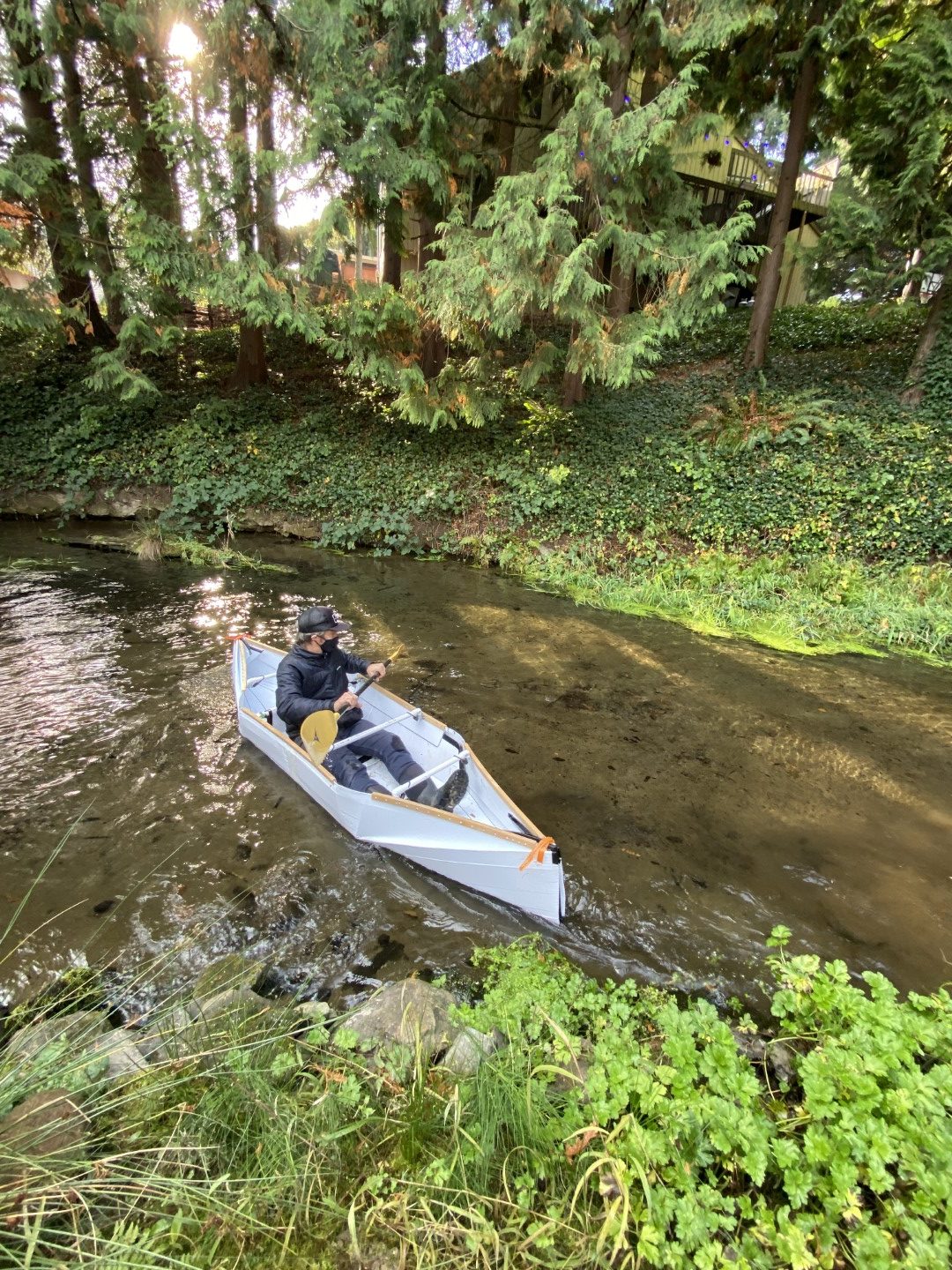
Out of the blue sky — or was it wildfire gray at the time? — I received a call to build a crazy origami folding kayak designed by Hong Wong. Like any hungry, cooped-up human who loves boats and the river, I seized the moment! If you like boats and boat building, you will appreciate the economy of materials, tools, and engineering in this boat.

Over two weeks, I built a few versions, trying as many melting, hot iron-fusing, and dim-witted thermoforming techniques as I could think of. In the end, the path was simple — a clothes iron is all that’s needed to bond the plastic sheets. The final boat was built in two days and here’s a time-lapse video to prove it!
This 12-foot, corrugated plastic origami boat is a low-cost build for those of us who like to experiment on the water or land. It paddles great and costs a fraction of the store-bought variety. And it’s just a cool way to build with plastic sheet. The folding, origami-like transformation from flat to boat to refolded for transport is awesome.
Hong has other versions of his boats and even one for low-cost disaster relief. Whatever, man! It’s just good to get outside. Let’s build a folding plastic kayak!
CAUTION: This is an experimental boat. We cannot guarantee your safety. You assume all the risks of building and using this boat. Read the liability waivers here and here.
BUILD YOUR ORIGAMI KAYAK
Before you build, download the free PDF plans here and watch the folding/unfolding video here.
Why did you start building these boats?
I came from a poor family. As a kid, I lived near the sea and I wanted a boat but never had money for one. Now I can afford a boat, but I don’t have space to keep one! Inflatable boats need more maintenance, and foldable kayaks are expensive, so I started learning how to design and build foldable boats. I want to share my learning so others can enjoy the fun of kayaking without spending a lot of money and time.
Does the folding affect the boat strength?
Yes, so we must add structural elements to compensate. This can be a cross-beam made with PVC pipe, or double layers of Coroplast on the floor, or a properly designed seat. There are other tricks too.
Which Coroplast is best for folding boats?
I use 6mm thickness, and there are 5mm boats on the market, but many of my YouTube viewers asked how to build with 4mm sheets from Home Depot or Lowes. Last summer I discovered the heat fusion method and I’m glad Nathaniel improved it!




